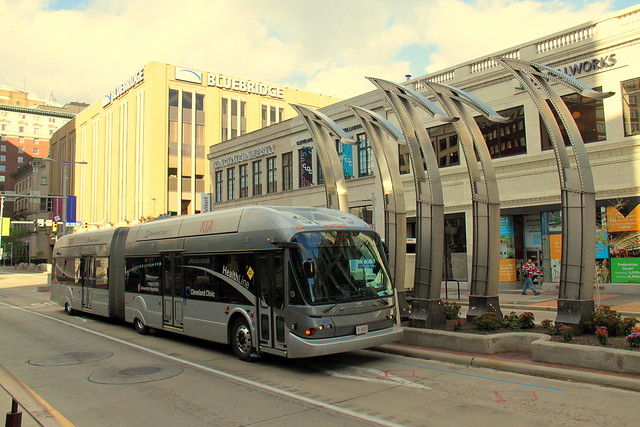
In some places, buses are starting to eclipse light rail and streetcars as the hot topic of transportation. Unfortunately, they’re less trendy where it matters: among commuters, as most systems across the country have been losing passengers in recent years.
Municipalities across the country are trying to figure out how they can reverse this trend and to make bus commuting more attractive to those traveling throughout their communities. Florida’s Palm Beach County has hired the “bus makeover star” that revamped Houston, Texas’ and Columbus, Ohio’s systems. As they’ve admitted to slow buses and have too many “spaghetti” routes, the county hopes their revamp will pull people back into their service.
Pittsburgh, Pennsylvania, is experimenting with multiple methods to make riding the bus smoother and worth taking. Since driving in mixed traffic is one of the most detrimental influences on bus reliability, especially in downtown areas, the city is using one popular route to test dedicated bus lanes in one direction and passenger islands in the other. The city is examining which will be more effective for their goals: in the case of the islands, buses will never have to merge in and out of traffic at stops, and the dedicated lanes would completely remove traffic from the route overall.
Give Buses the Fast Lane
Many other communities are hoping to prioritize their systems by introducing elements of bus rapid transit (BRT), which could further build on efforts such as those in Florida and Pittsburgh.
A word of caution on BRT: there is a tendency to let the definition creep beyond what it really is, which readers will find occurs in some of the linked articles in this post. It is important to distinguish between a full bus rapid transit service and introducing certain elements of it into a system so that communities with a full-fledged service can appropriately measure and compare indicators.
One important factor to speed up bus operations includes a system where passengers can board and disembark using any door on the vehicle, rather than having to board and pay only through the front. Boston’s MBTA is testing all-door boarding along one of the city routes, and hopes to implement it system-wide by 2020. The agency has already collected data from its first pilot that show faster boarding times and more on-time departures. More importantly, a survey of 900 customers suggested they felt it improved the service, and 70 percent of these respondents said it would make them likely to ride the Silver Line – the pilot route – again.
Atlanta, Georgia, and its surrounding jurisdictions may go for a full implementation of BRT to move people more efficiently around the region. In such a car-dependent area, it would be exciting to see officials prioritize more efficient services that provide people with better mobility options.
Elements of Success
A lot of recent commentary has swirled around Seattle as a potential role model in mobility given their significant increases in bus ridership while so many other systems are losing passengers. The city has prioritized buses as a commuter mode, made strategic improvements, and developed public support that led to people view the mode as a desirable way of getting around.
It is important to note, that good service is not necessarily the only ingredient to building transit ridership. As private-sector companies have discovered with their successful products, marketing plays a big role in creating buy-in, and transit needs to follow suit if it wants to convince the public of its value.
Image Credit: wyliepoon, Flickr, CC


